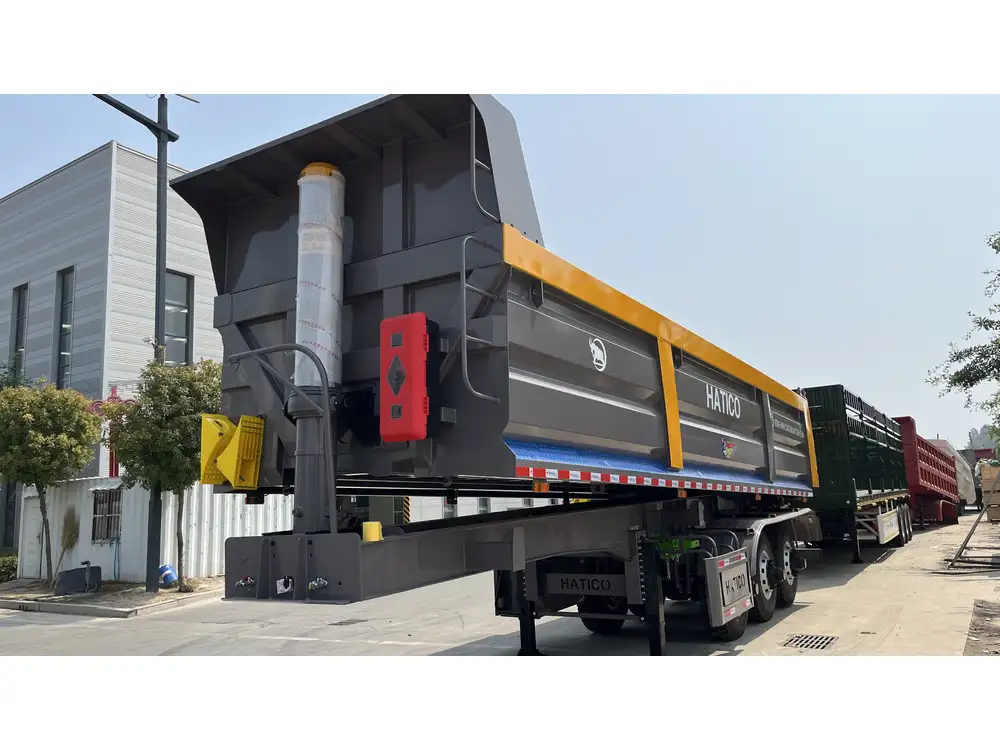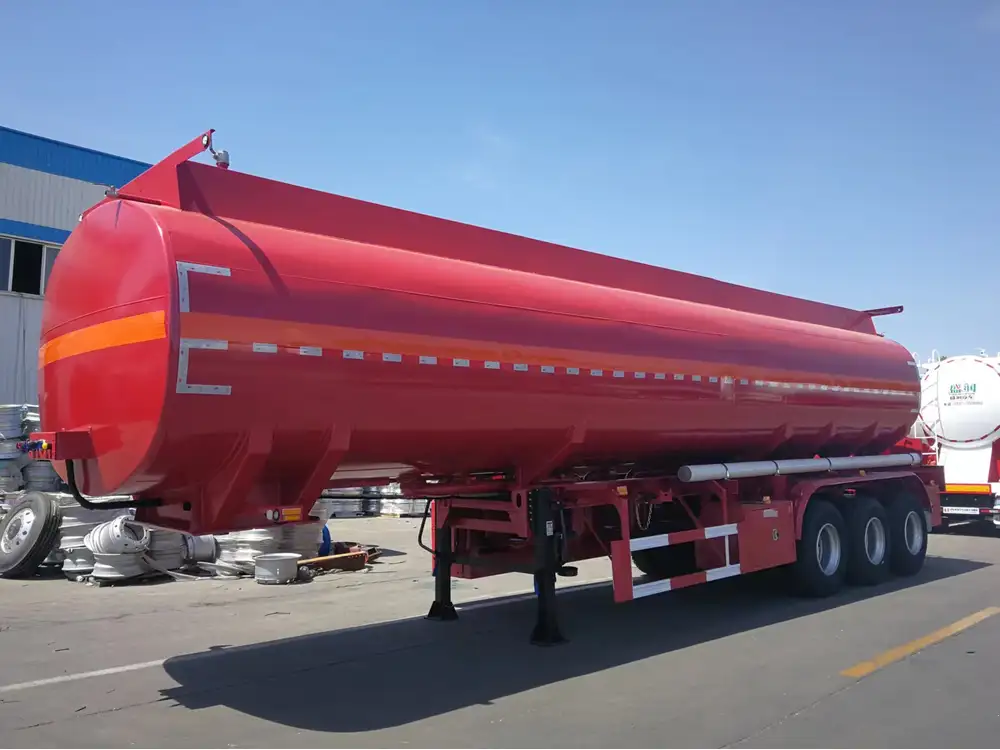When it comes to the logistics and transportation industry, understanding the efficiency of space utilization is akin to knowing the intricacies of a well-oiled machine. For manufacturers and shipment providers alike, one crucial aspect often considered is: How much money can fit in a semi-trailer? This question goes beyond mere volume; it delves into the nuances of load capacity, dimensions, and cargo types that directly influence profitability.
1. Semi-Trailer Basics: Dimensions Matter
Before we dive into the specifics of how much money can be carted away in a semi-trailer, it’s essential to understand the basic dimensions of these giants of the road.
| Trailer Type | Length (Feet) | Width (Feet) | Height (Feet) | Cubic Volume (Cubic Feet) |
|---|---|---|---|---|
| Standard Flatbed | 48 – 53 | 8.5 | 4 | 1,920 – 2,250 |
| Dry Van | 48 – 53 | 8.5 | 9.5 – 13.5 | 3,200 – 4,000 |
| Reefer Trailer | 48 – 53 | 8.5 | 9.5 – 13.5 | 3,200 – 4,000 |
| Tanker | 40 – 48 | 8-8.5 | 11 – 13.5 | 3,500 – 4,500 |
| Lowboy | 48 – 53 | 8.5 | 10.5 | 3,500 – 4,500 |
These varied dimensions influence how much cargo and the type of cargo can be transported, which in turn affects revenue.
1.1. Understanding Payload Capacity
The payload capacity of a semi-trailer is critical. Most semi-trailers can carry a maximum legal weight of 80,000 pounds on the highway, which includes the weight of the trailer itself. This means that the actual weight of the cargo may range significantly depending on the type of trailer being used.
- Standard Cargo: Approximately 45,000 to 50,000 pounds.
- Refrigerated Cargo: Often more delicate but can still weigh in about the same range.
- Heavy Loads (Lowboys): Can require special permits and offer reduced cargo capacity.

2. Calculating Revenue Per Trip
To answer the question of how much money can literally fit in a semi-trailer, one must consider various revenue-generating factors. Here’s how to approach this calculation strategically:
2.1. Revenue Generated by Different Types of Cargo
Cargo types vary greatly in terms of revenue potential. Here’s a compact comparison:
| Cargo Type | Average Revenue Per Load | Typical Weight/Load | Total Revenue for Full Trailer Load |
|---|---|---|---|
| Electronics | $2,000 – $5,000 | 50,000 lbs | $12,000 – $15,000 |
| Agriculture Produce | $1,000 – $3,000 | 45,000 lbs | $10,000 – $12,000 |
| Construction Materials | $1,500 – $4,000 | 50,000 lbs | $12,000 – $15,000 |
| Automotive Parts | $1,500 – $5,000 | 45,000 lbs | $10,000 – $15,000 |
| Hazardous Materials | $2,500 – $7,000 | 40,000 – 48,000 lbs | $10,000 – $20,000 |
2.2. Average Earnings from a Load
The earnings from one load can vary from as low as $1,000 to as high as $20,000 depending on the cargo type, distance, and market conditions. For instance, a full load of electronics traveling across the country may net significantly more than bulk agricultural products.

3. Factors Impacting Loading and Revenue
Understanding the many variables that affect loading capacity and revenue generation is essential. Let’s break it down:
3.1. Regulations and Legal Limits
- Weight Limits: The gross vehicle weight rating (GVWR) must not exceed 80,000 pounds unless special permits are obtained.
- Load Distribution: Incorrect weight distribution can lead to regulatory fines and damage to cargo.
3.2. Fuel Efficiency
The efficiency of the load can directly influence profitability. Heavier loads typically require more fuel, so finding an optimized balance between cargo weight and fuel consumption is paramount.
| Load Weight (lbs) | Fuel Consumption (MPG) | Cost per Mile |
|---|---|---|
| 30,000 | 8 | $3.50 |
| 40,000 | 7 | $4.00 |
| 50,000 | 6 | $4.50 |

3.3. Seasonal Demand Fluctuations
Certain months of the year witness spikes in demand for various cargo types, impacting the rates shippers can charge.
- Holiday Seasons: Increased demand for consumer goods.
- Harvest Seasons: Fluctuations in agricultural shipments.
4. Strategies to Maximize Revenues
As a manufacturer of semi-trailers, equipping your clients with knowledge on how to maximize the return from every load can be a game changer. Here are key strategies:
4.1. Optimize Load Characteristics
- Reduce Empty Miles: Optimize routes to minimize the distance traveled without cargo.
- Diversify Cargo Types: Encourage clients to load varying types of cargo to boost revenue per trip.

4.2. Improve Operational Efficiency
Investing in tracking systems and dynamic route planning tools can considerably enhance the efficiency of load management, ultimately affecting revenue positively.
4.3. Regular Maintenance of Trailers
Ensuring the semi-trailers are in optimal working condition not only keeps transportation smooth but reduces the risk of unexpected repairs and regulatory fines.
4.4. Knowledge of Market Trends
Frequent market analysis, understanding competitors, and being aware of clients’ changing needs can allow operators to make informed decisions for route and load selection.

5. Conclusion: The Economic Road Ahead
Calculating how much money can fit in a semi-trailer hinges upon a multifaceted view of the industry’s operational dynamics, load costs, type of cargo, and regulatory frameworks. By focusing on strategic factors impacting transportation and adopting a forward-thinking approach in logistics, manufacturers and transport companies can effectively maximize profitability, ensuring that every inch of trailer space translates into revenue.
By employing best practices in load management, remaining cognizant of market conditions, and utilizing advanced technology, the question of how much money fits in a semi-trailer evolves into an opportunity for continuous improvement and sustained profit in a competitive landscape.



